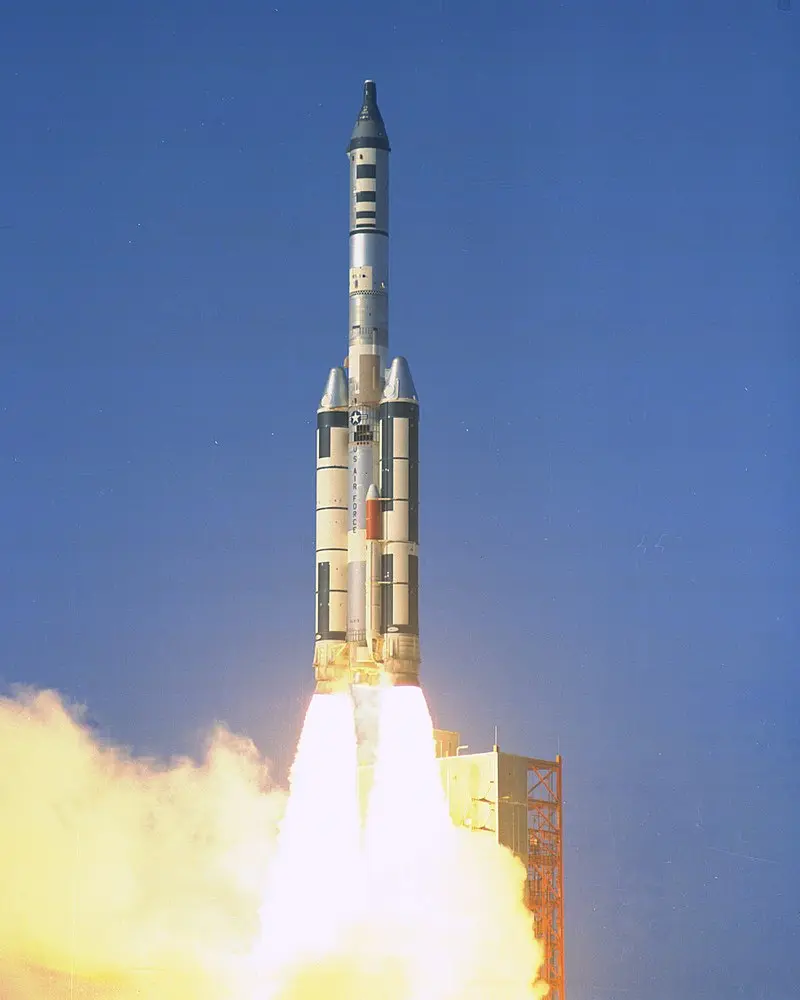Vela 5A/5B, OV5-5, OV5-6, OV5-9
Launch Success
Liftoff Time (GMT)
07:57:00
Friday May 23, 1969
Watch Replay
24/7 Coverage
Mission Details
Vela 5A/5B
Vela was the name of a group of satellites developed as the Vela Hotel element of Project Vela by the United States to detect nuclear detonations to monitor compliance with the 1963 Partial Test Ban Treaty by the Soviet Union.
Highly Elliptical Orbit
2 Payloads
518 kilograms
OV5-6
The satellite had an octagonal configuration, was spin-stabilized, and was placed in a moderately elliptical earth orbit (eccentricity - 0.670) by a Titan 3C on May 25, 1969. The purpose of the satellite was to monitor x-ray, electron, and proton radiation associated with solar activity in order to develop data handling techniques in near real-time for use by the Air Weather Service Forecast Center in forecasting solar flares.
1 Payload
23 kilograms
OV5-9
The purpose of this octahedral satellite was to monitor solar activity by measuring solar particle and x-ray fluxes. The experiments were designed to investigate physical processes occurring at the magnetopause and the mechanisms of particle acceleration. This spacecraft malfunctioned from the first day of launch due to commutator and power system problems. A very limited amount of useful data was obtained. The satellite became inoperable as of October 1972.
1 Payload
13 kilograms
OV5-5
The satellite had an octagonal configuration, was spin-stabilized, and was placed in a moderately elliptical earth orbit (eccentricity - 0.670) by a Titan 3C on May 25, 1969. The purpose of the satellite was to monitor x-ray, electron, and proton radiation associated with solar activity in order to develop data handling techniques in near real-time for use by the Air Weather Service Forecast Center in forecasting solar flares.
1 Payload
11 kilograms
Rocket


Manufacturer
US Air ForceRocket
Height: 42m
Payload to Orbit
LEO: 13,100 kg
GTO: 3,000 kg
Liftoff Thrust
13,642 Kilonewtons
Fairing
Diameter: 3m
Stages
3
Strap-ons
2
Launch Site
Stats
Titan III
38th
Mission
5th
Mission of 1969
1969
53rd
Orbital launch attempt